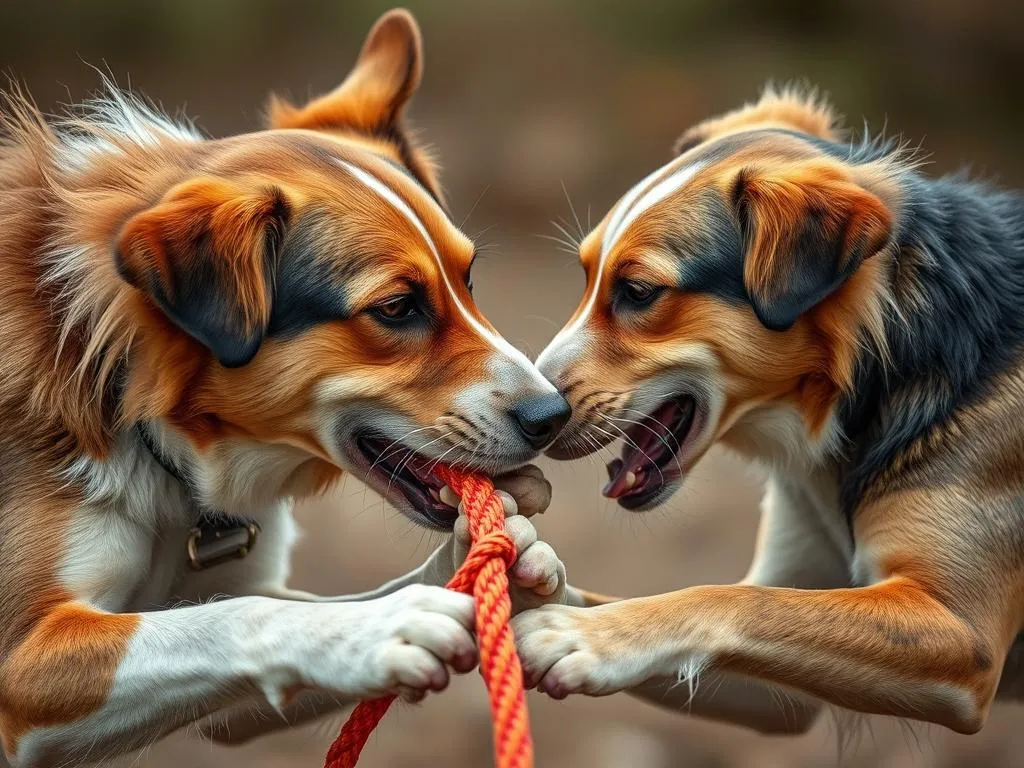
Tug of war is a beloved game among dog owners and their furry friends. It’s not just a fun pastime; it taps into the very instincts that make our dogs who they are. Understanding why dogs like tug of war allows us to appreciate the underlying canine behaviors and build stronger bonds with our pets. Let’s dive deep into the fascinating world of dogs and explore the reasons behind their enthusiasm for this engaging activity.
The Nature of Dogs
Understanding Canine Instincts
Dogs are descendants of wolves, and their behaviors reflect centuries of evolution. In the wild, canines engage in hunting, which often involves teamwork and physical exertion. Tug of war closely mirrors these natural behaviors. When dogs tug on a toy, they are not only channeling their predatory instincts but also engaging in a form of play that is crucial for their development.
Social Animals
Dogs are inherently social creatures. They thrive on interaction, whether with humans or other dogs. The concept of pack mentality is significant in their social structure, where they learn to play and communicate with one another. Tug of war mimics the social interactions seen in dog packs, where they engage in playful behavior that reinforces bonds and hierarchy. This game serves as an excellent outlet for their social instincts, allowing them to express their energy and enthusiasm in a controlled environment.
The Appeal of Tug of War
Physical Engagement
One of the most compelling reasons dogs love tug of war is the physical engagement it provides. This game is a fantastic form of exercise, allowing dogs to burn off energy in an enjoyable way. Tugging involves multiple muscle groups, promoting strength and endurance. Dogs of all breeds and ages can participate, making it a versatile activity that caters to different energy levels and physical capabilities.
Mental Stimulation
In addition to physical benefits, tug of war offers significant mental stimulation. The game challenges dogs to think strategically about how to win the tugging match. This problem-solving aspect keeps their minds active, which is essential for their overall well-being. Engaging in such mentally stimulating activities can help prevent boredom and the destructive behaviors that can stem from it.
Bonding with Owners
Tug of war is not just about the tugging; it’s also about interaction and bonding. When owners play tug of war with their dogs, they strengthen their relationship. The laughter, excitement, and shared enjoyment foster trust and companionship. This type of play helps dogs associate their owners with fun, reinforcing positive feelings and encouraging a lifelong bond.
Benefits of Playing Tug of War
Physical Health Benefits
Engaging in tug of war provides numerous physical health benefits for dogs. The game helps strengthen muscles and improves cardiovascular health, which is vital for all dogs, especially as they age. Additionally, tug of war allows dogs to release pent-up energy. Regular participation in this physical activity can help combat obesity, keeping dogs fit and healthy.
Behavioral Benefits
Playing tug of war can also lead to significant behavioral benefits. This game helps reduce anxiety by providing an outlet for excess energy and stress. It can also deter destructive behaviors, as a tired dog is less likely to engage in unwanted actions. Furthermore, incorporating tug of war into training sessions can reinforce positive behaviors, as dogs learn to associate play with good conduct.
Emotional Well-being
The joy and excitement that tug of war brings to dogs contribute to their emotional well-being. This playful activity stimulates the release of endorphins, the chemicals in the brain that promote happiness. Regular playtime, including games like tug of war, can significantly enhance a dog’s overall happiness and mental health, ensuring they live a fulfilling life.
How to Play Tug of War Safely
Choosing the Right Toys
Safety is paramount when it comes to playing tug of war. Choosing the right toys is essential for a safe and enjoyable experience. Look for durable tug toys made from strong materials that can withstand vigorous play. The size of the toy should also be appropriate for your dog to prevent choking hazards. A well-chosen toy can enhance the game and keep your dog engaged and safe.
Establishing Rules
Establishing clear rules is crucial for engaging in safe play. Teaching commands such as “drop it” or “leave it” can help manage the game and ensure it remains fun for both parties. It’s also important to recognize when to stop play, particularly if your dog becomes overstimulated or aggressive. Setting boundaries creates a positive atmosphere where both you and your dog can enjoy the game without any risks.
Monitoring Behavior
As with any activity, it’s essential to monitor your dog’s behavior during tug of war. Watch for signs of aggression or discomfort, such as growling or stiffening of the body. If your dog shows any signs of distress, it’s important to take a step back and reassess the play. Ensuring that the game remains positive and enjoyable is key to fostering a healthy play environment.
Common Misconceptions About Tug of War
Tug of War Encouraging Aggression
One prevalent myth is that playing tug of war can encourage aggressive behavior in dogs. This misconception stems from the belief that the game promotes dominance. However, research and expert opinions indicate that tug of war can actually be a healthy form of play. It allows dogs to express their instincts in a controlled environment, and when played with established rules, it can enhance obedience and trust.
Tug of War as a Dominance Game
Another common misunderstanding is that tug of war is a game of dominance. In reality, play is an important aspect of a healthy relationship between dogs and their owners. It serves to strengthen bonds and encourage cooperation rather than competition. By engaging in tug of war, owners can establish a partnership with their dogs, fostering a sense of teamwork that benefits both parties.
Alternatives to Tug of War
Other Interactive Games
While tug of war is a fantastic activity, it’s not the only game that can provide similar benefits. Other interactive games, such as fetch or hide and seek, can engage your dog physically and mentally. These activities can also promote bonding and provide the necessary exercise that dogs require for a healthy lifestyle.
Combining Play with Training
Incorporating training elements into playtime can enhance the benefits of both activities. For example, using tug of war as a reward for good behavior can encourage your dog to respond positively to commands. This combination of play and training reinforces learning while keeping the experience enjoyable and engaging.
Conclusion
Understanding why dogs like tug of war reveals much about their instincts and social behaviors. This game not only provides physical exercise but also mental stimulation and opportunities for bonding. The many benefits associated with playing tug of war make it an excellent activity for dogs and their owners alike.
Engaging in tug of war can significantly enhance a dog’s quality of life, promoting their physical health, behavioral well-being, and emotional happiness. It’s an activity that should be embraced by dog owners, as it nurtures the essential bond that exists between humans and their canine companions.
By fostering play in your dog’s life, you contribute to a happier, healthier existence for your furry friend. So, grab a tug toy and enjoy some quality time with your dog today!








